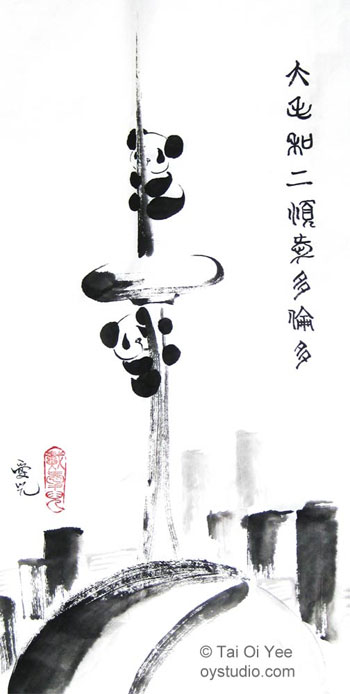Wishing Tree
Artist: Tai Oi Yee
Website: oystudio.com

The Wishing Tree at Lam Tsuen in Hong Kong is a famous landmark, and the custom is to write one’s wishes on red paper tied to a mandarin orange and throw it onto the tree. If it successfully hangs on the tree, then the wish will come true.
The story behind the Lam Tsuen Wishing Trees 林村許願樹: The village of Lam Tsuen in Hong Kong has been inhabited for over 700 years, and a shrine was built in 1736, before the British invaded China and snatched Hong Kong. An attempt by the villagers at guerilla warfare was put down by the British near Lam Tsuen with over 500 Chinese men killed, when British artillery was brought to bear on the walled villages . The shrine survived. Then during World War II, Japan invaded Hong Kong and the brave villagers of Lam Tsuen resisted together with Chinese fighters from other parts of Hong Kong but many were injured, tortured and killed. The shrine again survived.
At the foot of the shrine were 2 banyan trees. The villagers would write their names, birthdates and birth times, as well as their wishes for protection and good luck on red auspicious paper, and then tie the paper with stones and throw onto the trees. If landing and hanging on the tree, the wish would come true. Over time, the stones were changed to oranges for fear of injuring people underneath the trees.
Words of wishes coming true travelled, and people from all over Hong Kong as well as tourists flocked to the Wishing Tree. During Chinese New Year in 2005, there were so many people throwing wish packets onto the tree that one branch gave way, fell and injured people below. So the government prohibited throwing wish oranges onto the trees and erected wooden stands in the area, to allow the trees to heal. The villagers also bought a large plastic artificial tree as a substitute. By 2008, new leaves and growth appeared and villagers saw that as a sign of good luck and recovery. The conservation of the trees continues to this day.
Artist: Tai Oi Yee
Website: oystudio.com







